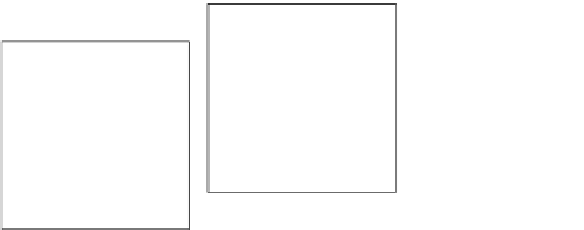Information Technology Reference
In-Depth Information
The successive images sent by the quadrotor are received by just one thread
in the node containing the UHF receiver and the video digitalizer card. This
requires designing the system with a master-slave hierarchy in which the master
thread receives and divides the image, and then distributes the patches between
threads. The main drawback of this hierarchical approach is that the latency of
the network to send each individual patch can significantly increase the execution
times.
In order to mitigate the latency problem of the legacy infrastructure, a mul-
tilevel domain decomposition approach is proposed. Furthermore, a pyramidal
Master/Taskmaster/Slave hierarchy to distribute the patches are used. The pro-
posed hierarchy uses one taskmaster per node, which is in charge of partitioning
data for the slave threads executing on that node, as shown in Fig. 3.
Master/Taskmaster 1
Taskmaster 2
Taskmaster 3
Node 1
Node 2
Node 3
Fig. 3.
Master/Taskmaster/Slave hierarchy example. Circles represent threads, gray
ones are the taskmasters. Wide lines represent connections over Ethernet and the thin
lines symbolize shared memory connections.
Thus, once the image is received, it is divided into blocks by the master thread
and each block is sent to the corresponding taskmaster. This previous division
of the image into blocks minimizes the number of messages sent by the master.
In the Master/Taskmaster/Slave hierarchy example shown in Fig. 3 only two
messages are sent over Ethernet against eight if the traditional Master/Slave
were used. After this, each taskmaster divides the received block into patches
and sends each patch to the slaves. The partitioning process is shown in Fig. 4.
Later, each slave performs the FFT, CPS and IFFT of the patch to find
ʔd
i
and then each displacement is sent back to the taskmasters and finally to
master. Once all the distances have been collected, the master thread calculates
the homography and isolates the
ˈ
angle.
Algorithm 3 summarizes the described method in Sect. 2 with the proposed
multilevel decomposition approach. As in the sequential approach the displace-
ments are calculated using the Algorithm 2.
4 Experimental Analysis
This section reports the experimental analysis of the proposed parallel algorithm
for yaw angle estimation.





































